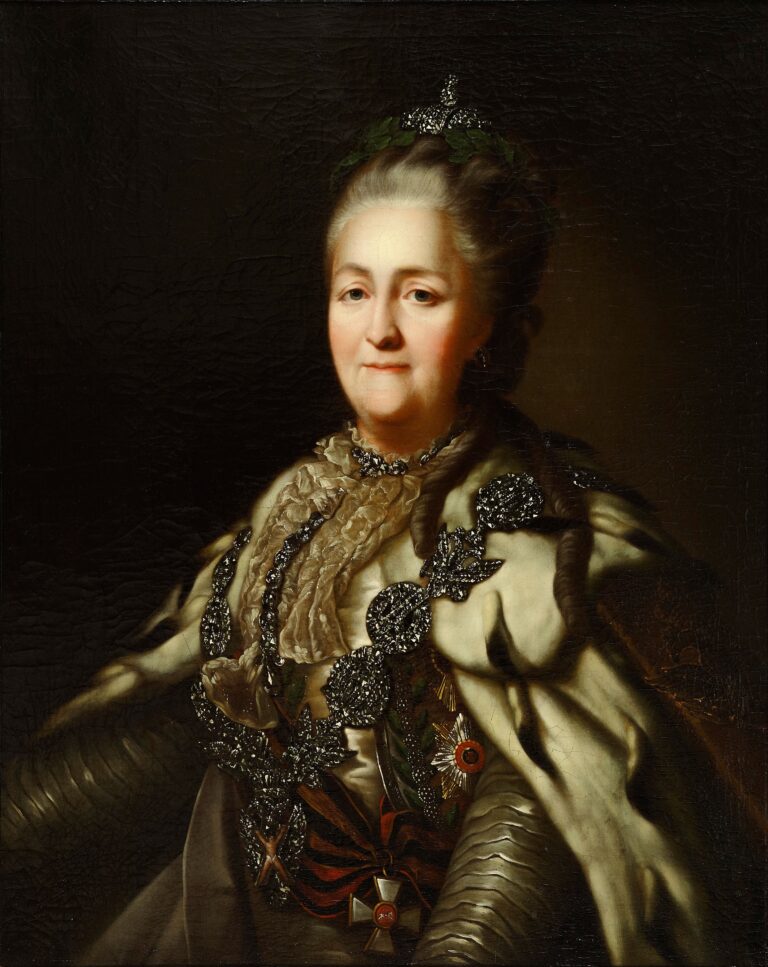From Toy Story to Onward: The Leadership Lessons and Stories of Pixar

The Magic of Pixar: A Leadership Case Study
Pixar Animation Studios is a globally renowned animation studio known for its high-quality and innovative productions, which have garnered numerous awards and critical acclaim over the years. Pixar’s success is widely attributed to its creative and visionary leadership, which has nurtured a culture of innovation, teamwork, and perseverance. In this article, we will explore the leadership lessons and stories of Pixar, providing insights into how they have been able to create a successful and thriving workplace environment.
Effective leadership is critical in any organization, and Pixar is no exception. One of the key figures in Pixar’s success story is the late Steve Jobs, who was a co-founder and former CEO of the company. Jobs was renowned for his visionary leadership, which was instrumental in helping Pixar to become one of the most successful animation studios in the world. He was able to see the potential of computer-generated animation, long before it became a mainstream trend in the film industry.
Steve Jobs’ leadership style was unique and impactful. He was an unconventional leader who challenged the status quo, and his approach to leadership was characterized by a willingness to take risks and push boundaries. He was not afraid to make difficult decisions, and he was always focused on achieving the best possible outcome for his company.
One of the most important lessons that we can learn from Jobs’ leadership is the importance of having a clear and compelling vision. Jobs had a vision for Pixar that went beyond just creating high-quality animated films. He saw the potential of computer-generated animation and believed that it could revolutionize the film industry. This vision provided a sense of purpose and direction for the entire company, and it helped to inspire and motivate the team to achieve great things.
Another important aspect of Pixar’s leadership is its commitment to fostering a culture of creativity. Pixar has always emphasized the importance of creativity and innovation in its productions, and this has been reflected in its leadership approach. The company has created a unique workplace environment that encourages its employees to think outside the box and come up with new and innovative ideas.
This emphasis on creativity has helped to make Pixar a very successful animation studio. By fostering an environment that values creativity and innovation, Pixar has been able to create films that are both artistically and commercially successful. This approach has also helped to attract and retain some of the most talented animators and filmmakers in the industry.
Pixar’s success can be attributed to a variety of factors, but effective leadership is undoubtedly one of the most important. By focusing on visionary leadership, fostering a culture of creativity, and embracing risk-taking and innovation, Pixar has been able to create a workplace environment that is both exciting and rewarding. In the following sections of this article, we will explore these leadership lessons and stories in greater detail, providing insights into how you can apply them to your own organization.
Visionary Leadership at Pixar
Pixar’s success story would not be complete without acknowledging the role played by Steve Jobs, one of the company’s co-founders and former CEO. Jobs’ visionary leadership was instrumental in helping Pixar to become the globally renowned animation studio that it is today.
One of the key lessons that we can learn from Jobs’ leadership at Pixar is the importance of having a clear and compelling vision. Jobs had a vision for Pixar that went beyond just creating high-quality animated films. He saw the potential of computer-generated animation and believed that it could revolutionize the film industry. This vision provided a sense of purpose and direction for the entire company, and it helped to inspire and motivate the team to achieve great things.
Jobs’ vision for Pixar was not just limited to the company’s business goals. He also had a clear idea of the kind of workplace environment that he wanted to create. He believed that in order to create great art, the team needed to be in a supportive and creative environment. Jobs once said, “You want to have a workplace where people are motivated to do their best work, and where they feel that they can accomplish great things.”
Jobs was also a leader who was not afraid to take risks and push boundaries. One of the most notable examples of this was Pixar’s first feature film, Toy Story. At the time, computer-generated animation was still a relatively new technology, and there were many skeptics who doubted whether it could be used to create a feature-length film. However, Jobs and the team at Pixar were undeterred, and they continued to work on Toy Story despite the challenges and setbacks they faced.
In addition to his visionary leadership, Jobs was also a hands-on leader who was actively involved in the creative process. He would review the storyboards, give feedback, and make suggestions to the team. This level of involvement helped to create a sense of unity and shared purpose within the company.
Today, Pixar continues to benefit from Jobs’ visionary leadership, even though he passed away in 2011. The company’s current leadership, including President Jim Morris and Chief Creative Officer Pete Docter, have continued to build on the legacy that Jobs left behind.
Jobs’ visionary leadership at Pixar was instrumental in helping the company to achieve its goals and become a global leader in animation. His clear vision, willingness to take risks, and involvement in the creative process are all important leadership lessons that can be applied to any organization. By focusing on creating a clear and compelling vision, taking calculated risks, and being actively involved in the creative process, leaders can inspire and motivate their teams to achieve great things.
Creative Culture at Pixar
Pixar has been able to maintain its position as a global leader in animation due in part to its unique and innovative culture. The company’s leadership has created a workplace environment that encourages creativity, risk-taking, and collaboration, which has helped to foster an atmosphere of innovation and success.
One of the key aspects of Pixar’s creative culture is its emphasis on collaboration. The company has created a workplace environment that encourages open communication and teamwork, and this approach has helped to break down barriers between different departments and foster a sense of shared ownership over the creative process. This emphasis on collaboration has been reflected in the company’s approach to filmmaking, which involves multiple teams working together to bring a film to life.
Another important aspect of Pixar’s creative culture is its focus on experimentation and risk-taking. The company encourages its employees to take risks and try new things, and this approach has led to some of the most innovative and groundbreaking animated films of our time. Pixar’s leaders understand that failure is a necessary part of the creative process, and they encourage their employees to learn from their mistakes and use them as opportunities for growth and improvement.
Pixar’s leadership has also placed a high value on the importance of feedback and critique. The company has created a culture in which feedback is seen as an essential part of the creative process, and employees are encouraged to give and receive feedback in a constructive and supportive manner. This approach has helped to ensure that every film produced by Pixar is of the highest possible quality.
Another important aspect of Pixar’s creative culture is its commitment to fostering a diverse and inclusive workplace. The company’s leaders understand that diversity is essential for creativity and innovation, and they have worked hard to create a workplace environment that is welcoming to people from all backgrounds. This approach has helped to attract and retain some of the most talented animators and filmmakers in the industry, and it has also helped to ensure that Pixar’s films resonate with audiences from all walks of life.
Pixar’s creative culture is one of the key factors that have helped to make the company a global leader in animation. By emphasizing collaboration, risk-taking, feedback, and diversity, the company has created a workplace environment that encourages creativity and innovation. These are important leadership lessons that can be applied to any organization, regardless of its size or industry. By focusing on creating a culture of creativity, leaders can inspire and motivate their teams to achieve great things and create lasting success.
Teamwork and Collaboration at Pixar
One of the hallmarks of Pixar’s success is its collaborative approach to filmmaking. The company’s leadership understands that creating great films requires a diverse team of talented individuals working together towards a common goal. As a result, Pixar has created a workplace environment that encourages open communication, teamwork, and collaboration.
The collaborative approach to filmmaking at Pixar is evident in every aspect of the production process. From the initial concept and storyboarding to the final animation and sound design, multiple teams work together to bring a film to life. The company’s leaders understand that every person on the team has a unique set of skills and talents, and they encourage their employees to work together to achieve the best possible outcome.
One of the ways that Pixar encourages collaboration is by creating a sense of shared ownership over the creative process. Each member of the team is encouraged to contribute ideas and provide feedback, and everyone is held accountable for the final product. This approach helps to create a sense of teamwork and camaraderie, which is essential for success in any organization.
Another important aspect of Pixar’s collaborative approach to filmmaking is its commitment to open communication. The company’s leaders understand that effective communication is essential for success in any collaborative endeavor, and they encourage their employees to communicate openly and honestly with one another. This approach helps to ensure that everyone is on the same page and that everyone’s ideas are heard and considered.
Pixar’s collaborative approach to filmmaking has not only helped to create some of the most innovative and groundbreaking animated films of our time but has also led to significant commercial success. The company’s films consistently rank among the highest-grossing films of the year, which is a testament to the effectiveness of their collaborative approach.
The importance of teamwork and collaboration extends beyond the creative process at Pixar. The company’s leaders understand that effective teamwork is essential for success in all areas of the business. As a result, they encourage their employees to work together on projects and to support one another in achieving their goals.
Pixar’s collaborative approach to filmmaking is one of the key factors that have contributed to the company’s success. By emphasizing teamwork, open communication, and shared ownership over the creative process, the company has been able to create a workplace environment that encourages collaboration and innovation. These are important leadership lessons that can be applied to any organization, regardless of its size or industry. By focusing on creating a culture of teamwork and collaboration, leaders can inspire and motivate their teams to achieve great things and create lasting success.
Resilience and Perseverance at Pixar
Over the years, Pixar has faced its fair share of challenges and setbacks. However, the company has been able to overcome these challenges and emerge even stronger thanks to its commitment to resilience and perseverance. Pixar’s leaders understand that failure is an essential part of the creative process, and they encourage their employees to learn from their mistakes and use them as opportunities for growth and improvement.
One of the most significant challenges that Pixar faced in its early years was financial difficulties. In the early 1990s, the company was struggling to stay afloat, and it was on the verge of bankruptcy. However, rather than giving up, Pixar’s leaders remained committed to their vision and persevered through this difficult period. Eventually, the company was able to secure a deal with Disney, which helped to stabilize its finances and provide a much-needed boost to its creative efforts.
Another example of Pixar’s commitment to resilience and perseverance can be seen in the production of the film Toy Story 2. During the production process, the film’s entire story was deleted due to a technical glitch. Many people would have given up at this point, but Pixar’s leaders saw this setback as an opportunity to create an even better film. They worked tirelessly to re-create the story from scratch, and the end result was a film that was even better than the original.
In addition to these examples, Pixar has faced many other challenges over the years, including creative differences, staffing issues, and production setbacks. However, through it all, the company’s leaders have remained committed to their vision and have continued to persevere through difficult times.
One of the most important leadership lessons that we can learn from Pixar’s commitment to resilience and perseverance is the importance of embracing failure. Failure is an essential part of the creative process, and it is through our failures that we learn and grow. Pixar’s leaders understand this, and they encourage their employees to take risks and try new things, even if it means that they may fail along the way.
Another important aspect of Pixar’s commitment to resilience and perseverance is its focus on the long-term. The company’s leaders understand that success does not come overnight, and they are willing to invest the time and effort needed to achieve their goals. This long-term approach has helped to create a workplace environment that values patience, persistence, and dedication.
Pixar’s commitment to resilience and perseverance is one of the key factors that have contributed to the company’s success. By embracing failure, taking a long-term approach, and persevering through difficult times, the company has been able to create some of the most innovative and successful animated films of our time. These are important leadership lessons that can be applied to any organization, regardless of its size or industry. By focusing on resilience and perseverance, leaders can inspire and motivate their teams to overcome challenges and achieve great things.
Innovation and Risk-Taking at Pixar
Pixar’s commitment to innovation and risk-taking has been a key factor in the company’s success. The company’s leaders understand that innovation is essential for creating great art, and they encourage their employees to think outside the box and try new things. This approach has led to some of the most innovative and groundbreaking animated films of our time.
One of the ways that Pixar encourages innovation is by providing its employees with the resources and support needed to take risks and experiment with new ideas. The company’s leaders understand that not every idea will be successful, but they encourage their employees to try new things regardless. This approach has helped to create a workplace environment that values creativity and innovation.
Another important aspect of Pixar’s approach to innovation is its focus on interdisciplinary collaboration. The company’s leaders understand that innovation often comes from combining different ideas and perspectives, and they encourage their employees to work together across different departments and disciplines. This approach has led to some of the most innovative and successful animated films of our time.
In addition to encouraging innovation through collaboration and risk-taking, Pixar’s leaders also understand the importance of staying ahead of the curve when it comes to technology. The company was one of the first animation studios to embrace computer-generated animation, and it has continued to push the boundaries of what is possible with new technology. This commitment to staying ahead of the curve has helped to ensure that Pixar remains at the forefront of the animation industry.
One of the most important leadership lessons that we can learn from Pixar’s approach to innovation and risk-taking is the importance of embracing change. In today’s rapidly changing business environment, it is essential for leaders to be adaptable and willing to try new things. Pixar’s leaders understand this, and they encourage their employees to be open to change and to embrace new ideas and technologies.
Another important aspect of Pixar’s approach to innovation and risk-taking is its focus on experimentation. The company’s leaders understand that not every idea will be successful, but they encourage their employees to experiment and try new things regardless. This approach helps to create a workplace environment that values creativity and innovation and helps to ensure that the company remains at the forefront of the animation industry.
Pixar’s commitment to innovation and risk-taking has been a key factor in the company’s success. By encouraging interdisciplinary collaboration, providing resources and support for experimentation, and staying ahead of the curve when it comes to technology, the company has been able to create some of the most innovative and groundbreaking animated films of our time. These are important leadership lessons that can be applied to any organization, regardless of its size or industry. By focusing on innovation and risk-taking, leaders can inspire and motivate their teams to achieve great things and create lasting success.
Lessons from Pixar: Creating a Culture of Creativity and Innovation
Pixar’s success story is a testament to the power of visionary leadership, creative culture, teamwork and collaboration, resilience and perseverance, and innovation and risk-taking. Through its commitment to these principles, the company has been able to create some of the most innovative and successful animated films of our time, and it has become a global leader in the animation industry.
One of the most important lessons that we can learn from Pixar’s success story is the importance of creating a workplace environment that encourages creativity, collaboration, and innovation. By fostering a culture that values these qualities, leaders can inspire and motivate their teams to achieve great things and create lasting success.
Another important lesson that we can learn from Pixar’s success story is the importance of perseverance and resilience. The company has faced its fair share of challenges and setbacks over the years, but its leaders have remained committed to their vision and have persevered through difficult times. By embracing failure, taking a long-term approach, and persevering through difficult times, leaders can inspire and motivate their teams to overcome challenges and achieve great things.
Finally, Pixar’s success story also highlights the importance of innovation and risk-taking. By encouraging experimentation, interdisciplinary collaboration, and staying ahead of the curve when it comes to technology, leaders can inspire and motivate their teams to create groundbreaking innovations and achieve lasting success.
In conclusion, Pixar’s success story is a powerful example of the importance of visionary leadership, creative culture, teamwork and collaboration, resilience and perseverance, and innovation and risk-taking. These are important leadership lessons that can be applied to any organization, regardless of its size or industry. By embracing these principles, leaders can inspire and motivate their teams to achieve great things and create lasting success.






